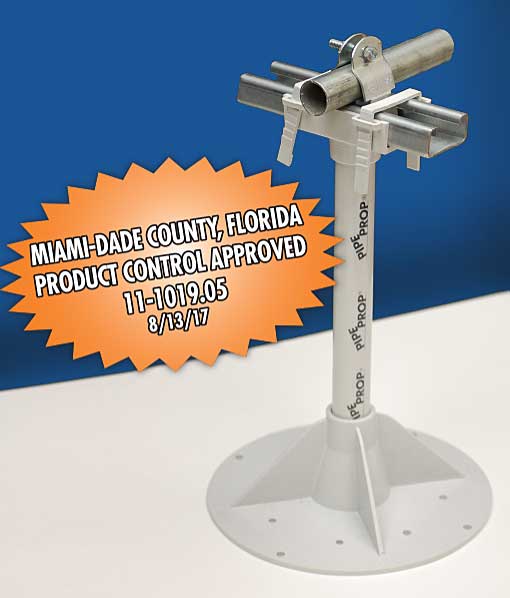Hello
We recently redid an installation on a roof, based in unistrut, for support disconnects that feed AC machines.
We replaced the 40 years old unistruts and basically repeated the same type of installation, attaching the unistrut post to unistrut post bases anchored to the concrete deck. All this bases ended under the roof insulation that was replaced, then sealed by roofers.
Then the project architect appear after all the work was finished and he said that unistrut support is not wind approval, and we have to use a kind of pipe support engineered for that purpose, that it have a Notice Of Approval (NOA) from Miami-Dade authorities.
We don’t have anything in the prints or contract that specify that we have to use this special wind rating support.
The original installation, almost the same that we did now, resist 40 years of hurricanes in Florida, and I pretty sure it could resist 40 years more.
All people are freak out after the hurricane Ian, and some builders start to ask for exaggerated exigencies.
We can’t find any information about the wind resistance of unistrut post stands, but I believe the load specifications comply with the wind rating required. And the survival record of this kind of installation speaks for itself.
How we can deal with this situation?
We recently redid an installation on a roof, based in unistrut, for support disconnects that feed AC machines.
We replaced the 40 years old unistruts and basically repeated the same type of installation, attaching the unistrut post to unistrut post bases anchored to the concrete deck. All this bases ended under the roof insulation that was replaced, then sealed by roofers.
Then the project architect appear after all the work was finished and he said that unistrut support is not wind approval, and we have to use a kind of pipe support engineered for that purpose, that it have a Notice Of Approval (NOA) from Miami-Dade authorities.
We don’t have anything in the prints or contract that specify that we have to use this special wind rating support.
The original installation, almost the same that we did now, resist 40 years of hurricanes in Florida, and I pretty sure it could resist 40 years more.
All people are freak out after the hurricane Ian, and some builders start to ask for exaggerated exigencies.
We can’t find any information about the wind resistance of unistrut post stands, but I believe the load specifications comply with the wind rating required. And the survival record of this kind of installation speaks for itself.
How we can deal with this situation?



